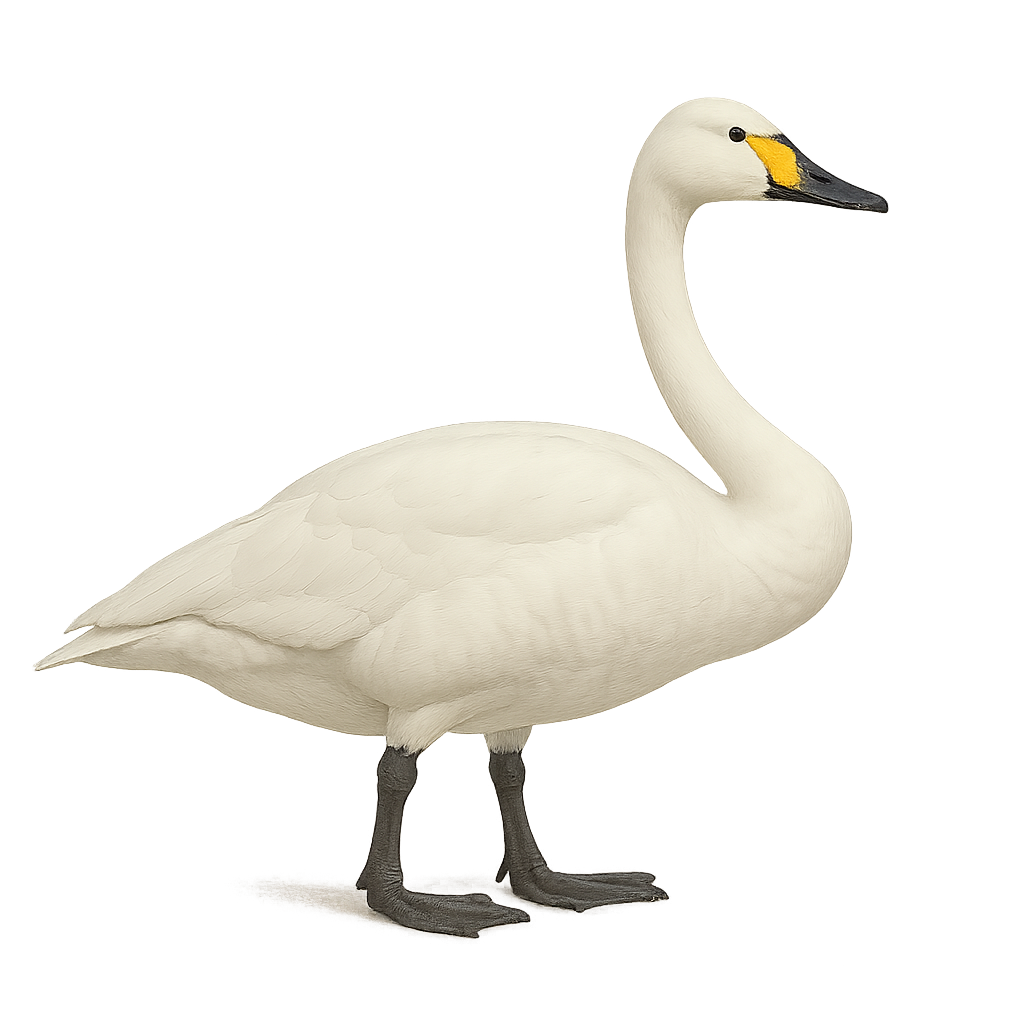Your wildlife photography guide.
Explore the tundra swan in detail, study its behavior, prepare your shots.
Where to observe and photograph the tundra swan in the wild
Learn where and when to spot the tundra swan in the wild, how to identify the species based on distinctive features, and what natural environments it inhabits. The WildlifePhotographer app offers tailored photography tips that reflect the tundra swan’s behavior, helping you capture better wildlife images. Explore the full species profile for key information including description, habitat, active periods, and approach techniques.
Tundra Swan
Scientific name: Cygnus columbianus

IUCN Status: Least Concern
Family: ANATIDAE
Group: Birds
Sensitivity to human approach: Suspicious
Minimum approach distance: 30 m
Courtship display: May to June
Incubation: 30-32 jours
Hatchings: June to July
Habitat:
Wetlands, lakes, marshes
Activity period :
Primarily active during the day, with peak activity in the morning and late afternoon.
Identification and description:
The Tundra Swan, Cygnus columbianus, is a medium-sized waterfowl belonging to the Anatidae family. It is recognizable by its pure white plumage and black bill with a yellow spot at the base. This swan is known for its melodious call, which gives it its name. It primarily inhabits wetlands and lakes in Arctic and subarctic regions during the breeding season, then migrates to more temperate areas in winter. The Tundra Swan is a gregarious bird, often seen in large flocks. Its diet mainly consists of aquatic plants, which it uproots by dipping its long neck underwater.
Recommended lens:
400mm – adjust based on distance, desired framing (portrait or habitat), and approach conditions.
Photography tips:
To photograph the Tundra Swan, choose the golden hours of morning or evening for soft, flattering light. Use a telephoto lens of at least 400mm to capture precise details without disturbing the bird. Be patient and wait for the swan to adopt a graceful posture or interact with its environment. Opt for a clean background to highlight the white plumage. Consider including elements of the natural habitat to provide context to your photo.
The WildlifePhotographer App is coming soon!
Be the first to explore the best nature spots, track rutting seasons, log your observations, and observe more wildlife.
Already 1 430 wildlife lovers subscribed worldwide

